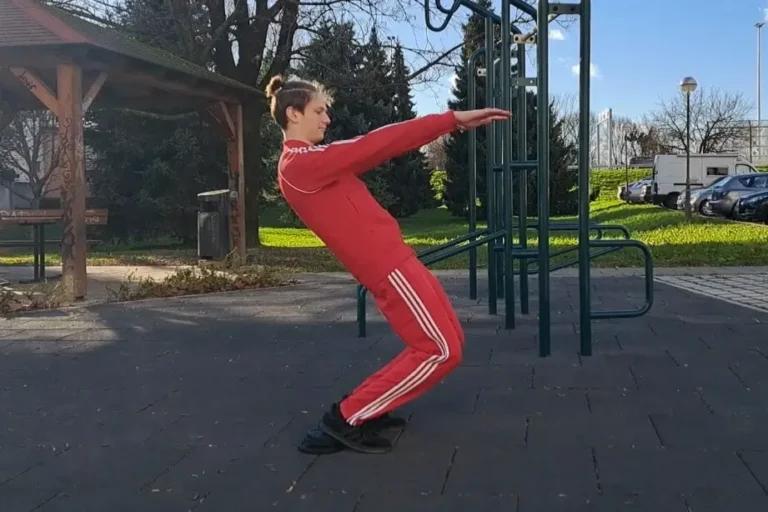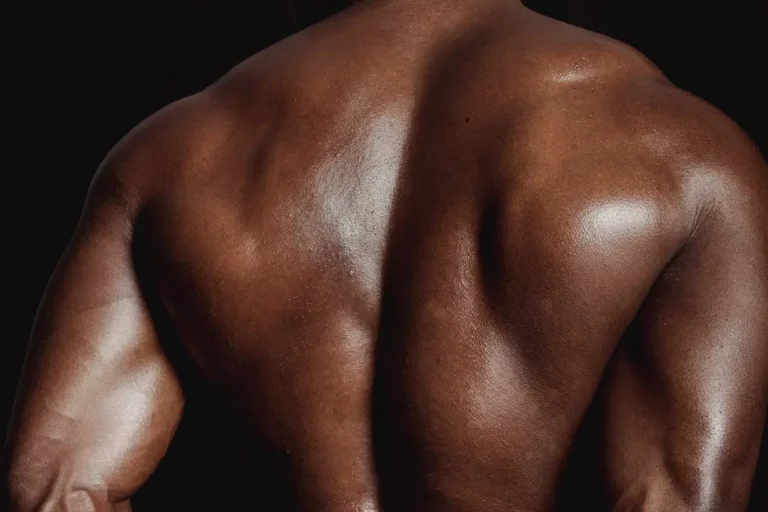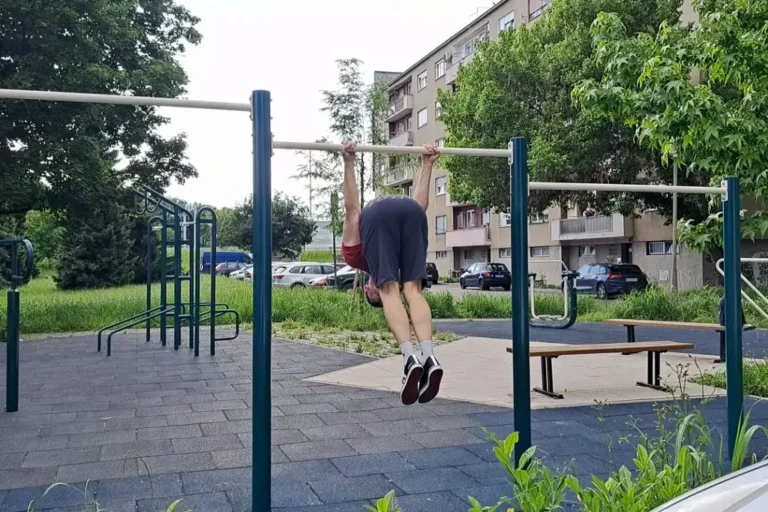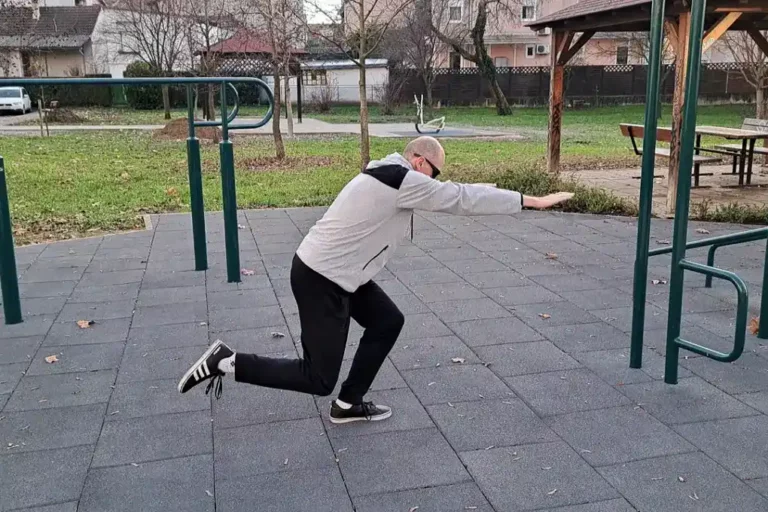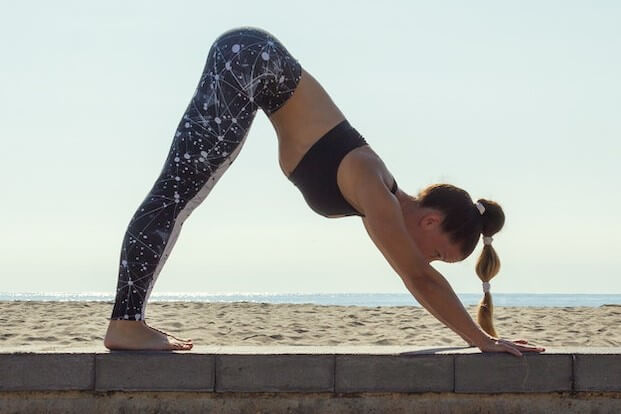Transform Your Body In 30 Days With This Calisthenics Pull Workout!
Have you ever wanted to master a calisthenics pull workout?
When I started my fitness journey I got hooked when I first saw Chris Heria doing muscle ups with incredible ease. Being able to do this myself became an obsession for me. Little did I know how long it would take to be able to master something so demanding.
So, what could be better than concentrating my efforts on pulling exercises? Mastering calisthenics pull workouts became my main mission. This is why I wanted to pass this knowledge on to you.
But what’s in it for you? You will be able to increase the number of pull-ups you can do by at least 2-3 reps within 30 days of using this workout. I have done it many times, so can you.
Calisthenics Pull Workout
If you have a calisthenics park nearby, you have everything you need to do this workout. Even if you can find a tree branch you can hang from, you are set to go.
So, let’s jump straight into it. Here’s what a calisthenics pull workout may look like.
| Load | Activity | Muscle Group |
|---|---|---|
| 5-10 min | Warm-Up | All |
| 3 x 5-8 reps | Pull-Ups | Lats / Biceps |
| 3 x 5-8 reps | Chin-Ups | Biceps / Lats |
| 3 x 20 s | Pull-Up Negatives | Lats / Biceps |
| 3 x 30 s | Dead Hang | Traps / Forearms |
| 3 x 8-12 reps | Inverted Rows | Lats / Traps / Biceps |
| 3 x 8-12 reps | Low Bar Chin-Ups | Biceps / Lats / Traps |
| 5-15 min | Cool-Down Stretching | All |
* The exact workout that suits your level of ability may be different. To modify this workout, check the pull-up and muscle-up progressions for a selection of pulling exercises.
If this workout is too easy, you will pick harder skills. If it’s too hard, you will select easier ones. You can also check the beginner pull workout for a complete beginner-friendly workout.
Warm-up
To start your workout safely, starting your workout with a short warm-up seems like a great idea. On several occasions in the last five years, I got injured when I skipped this important step.
So, taking just 5 – 10 minutes before jumping into your main workout session doesn’t seem like a huge waste of time. Here’s a short 5-minute follow-along warm-up session I do before my workouts, so you don’t have to think too hard about imagining something on your own. Of course, if you already have your own warm-up session, you can use it instead of this one.
Pull-Ups
Now, if you are after increasing the number of your pull-ups, what better way to start your calisthenics pull workout than a regular pull-up?
Even if you can barely squeeze one or two pull-ups, just try your best and do as many as you can. The numbers will increase slowly over time.
I couldn’t even hang from a bar when I started. But it didn’t stop me.
Positioning:
Find a pull-up bar from which you can hang without touching the ground with your feet. Grab a bar with your palms facing away from you – this is called a pronated grip. Your hands should be positioned a bit wider than your shoulder width.
Upward movement:
The first part of the pull-up is the scapula activation. From a dead hang you move to an active hang.
In a dead hang, you are just hanging from a bar with your feet pointed down. In an active hang, you activate your scapulas and make a small movement. It feels like you are pulling your body between your shoulders up toward the bar.
After this small movement, you continue to pull your body up aiming to touch the bar with your chest. You do this by pulling with your arms and your upper back and bending your elbows.
When your chin is over the bar, you are at the highest point of a pull-up. If you are strong enough and you can do regular pull-ups with relative ease, you can increase the difficulty by pulling all the way up until your chest touches the bar (so-called chest-to-bar pull-up).
Downward movement:
Lowering down is even more important for building the strength and size of your muscles than pulling up. To do it correctly, lower down slowly. If you were pulling up counting 1, you should lower down counting 1, 2, 3.
Load:
Do 5-8 reps in 3 sets. If you still can’t do 5 reps in a set, do as much as you can at the moment. You will increase the numbers over time. After taking a break from my regular workouts, I may start with 2 reps in a set. In a month or two, I eventually get back to 5 reps in a set.
Chin-Ups
Chin-ups are a little easier to do than pull-ups. Chin-ups will work your biceps muscles more and your lats a bit less than pull-ups. This makes chin-ups an excellent exercise to follow after you do pull-ups.
Positioning:
The difference between chin-ups and pull-ups is in the way you grab the bar. In pull-ups, your palms were facing away from you. In chin-ups, your palms should be facing toward you.
Your hands will be positioned a bit narrower than in pull-ups. So, you will be holding a bar at around shoulder width, or even a bit closer. Everything else will remain the same as with pull-ups.
Upward movement:
The pulling motion will be the same as in pull-ups.
Downward movement:
For best results, pay attention to lowering down three times slower than pulling up.
Load:
Repeat for 3 sets with 5-8 reps in a set.
Pull-Up Negatives
Pull-up negatives are like performing only the lowering part of the regular pull-ups. You have to jump up to a bar and lower down slowly into a dead hang.
Positioning:
You can jump up to a pull-up bar. Or, you can start by standing on an elevated surface (like a box for example) while holding onto a bar. While I never had a box handy, I always jumped up to a bar.
Performing:
Lower yourself down slowly by extending your arms. Gradually lower down until you are in a dead hang position.
Load:
Repeat for 3 sets with 20 seconds of lowering down in each set. Of course, if you can do it for 20 seconds. If this is too hard for you, try with a 10 s descent and slowly increase the lowering time.
Dead Hang
Now it’s time for an isometric exercise. Meaning, you will be just holding one position without moving. It’s just a regular hang from a bar.
Positioning:
Grab a bar like you did in a regular pull-up. Point your toes down to the ground, and that’s it.
Performing:
Just hold this position for about 30 seconds.
Load:
Hold for 30 seconds in 3 sets.
Inverted Rows
Inverted rows are also known as Australian pull-ups or low-bar pull-ups. When I started working out, this was the first exercise I was able to do. I started with inverted rows and slowly moved along up to chest-to-bar pull-ups and band-assisted muscle-ups in my best days.
Positioning:
Grab a low bar with your palms facing away from you. You will be holding a bar a bit wider than your shoulder width. Your heels will be planted on the ground firmly, with your body forming a straight line from your feet to your head.
Upward movement:
Bend your elbows while pulling your chest up to a bar. When you touch the bar with your chest, you reach the highest point in the movement.
Downward movement:
Slowly lower down by extending your arms. Keep on straightening your arms until they are completely straight and you are back at the starting position again.
Load:
Repeat for 5-8 reps in 3 sets.
Low Bar Chin-Up
The difference between inverted rows and low bar chin-ups is in the way you position your hands on a bar. Your hands should be positioned the same as in chin-ups.
Positioning:
Grab a low bar with your palms facing toward you. This is the only difference compared to inverted rows. Everything else should remain the same. So, you will be doing the same movement as in inverted rows only with a different grip.
Load:
Do this exercise for 5-8 reps in 3 sets.
Cool-down stretching
To finish your workout, do a short 5 – 15 minute cool-down stretching routine. This will help you relax your muscles, release the muscle tension, and slowly cool down your body.
After this routine, you can take a cold shower to reduce the recovery time. So, you can do your next workout with increased tension.
Calisthenics Pull Workout Progression
To see your progress easily, first note how many pull-ups you can do right now. Do this workout for 30 days and then note how many pull-ups you can do. This is how easy it is to see how far you have come.
Now, if some of the exercises become too easy for you, there is an easy way to progress further. You just pick a harder exercise from a pull-up progression or a muscle-up progression, depending on your level of ability.
But how do you know an exercise is too easy? If you can do more than 15 reps in a set, or you can hold longer than 60 seconds in a set, you can safely conclude the exercise became too easy for you. It’s time to pick something more challenging.
Calisthenics Pull Workout Required Equipment

For this workout, you can get by using only two bars. A high pull-up bar from which you can hang without touching the ground with your feet, and a low bar.
For a low bar, you can use dip bars or some other kind of low bar which will allow you to do inverted rows and low bar chin-ups.
When inverted rows and low bar chin-ups are too easy for you, you will only need a high pull-up bar. So, the stronger you get, the less equipment you will need.
Calisthenics Pull Workout Conclusion
Now you see how easy it is to get your pull-up count up by using a calisthenics pull workout.
Measure your current pull-up count and compare it with what you will be able to do in 30 days. I was able to get my numbers up by 2 or 3 reps in a set every time I did this.
There is no reason, you can’t do the same. So, let’s start your first calisthenics pull workout and get your pull-up numbers up!

